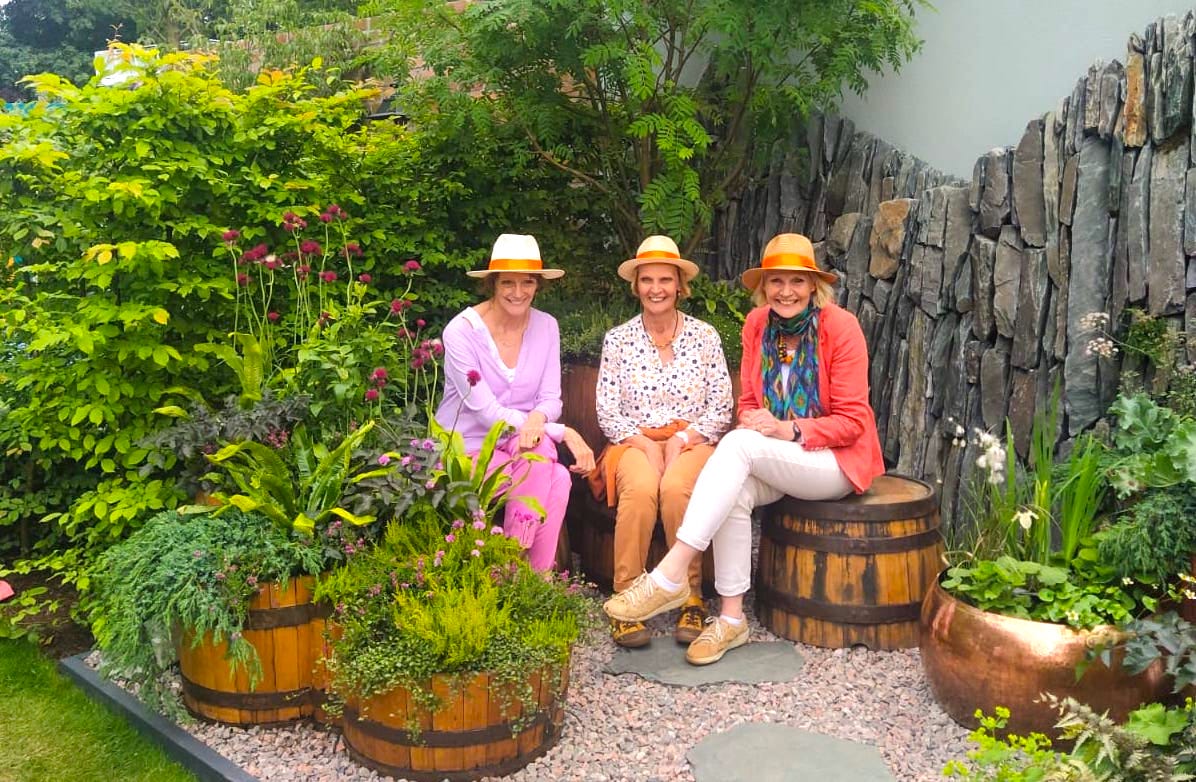
Are plant catalogues thudding through your letterbox thick and fast right now? Most have pages and pages of petunias etc guaranteed to flower non-stop all summer long. What are your thoughts? (please do let us know!) We think the same flowers all summer is a bit dull but then neither do we want a mid-season lull.
No, what we want is a succession of long-lasting colour in the garden giving us seamless variety! Needless to say, we don’t agree on the best plants to achieve this…
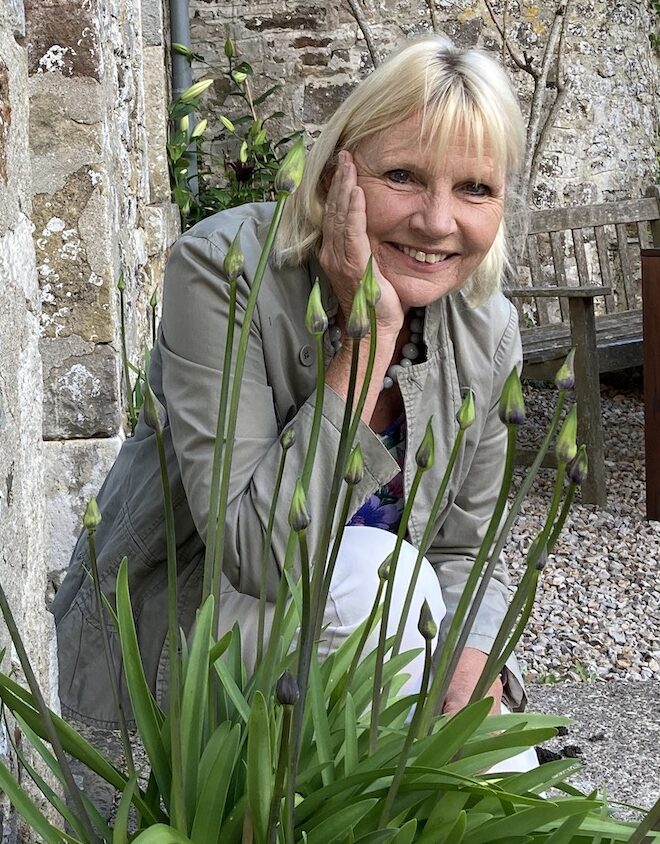
I’m the lucky Growbag – I don’t have to contend with Caroline’s Caledonian climate (brr), or the highs and lows of growing obscure and demanding primadonnas (Laura). I just like creating living pictures with my garden plants. Satisfying to the eye, and kind on the purse. To that end, these are my go-to favourites for continuity of summer colour:
Hardy Geraniums. These wonderful plants aka cranesbills are perfect for early summer borders. They are easy to plant, maintain, and propagate and have a huge range of colours through whites, pinks, purples, blues and even almost black. Look at the luminous colour of G. ‘Brookside’ in our feature pic this week. Some like G. phaeum are fine in shade, some like G. psilostemon are tall, others like G. cinerareum are like small alpines. Some even have fragrant leaves.
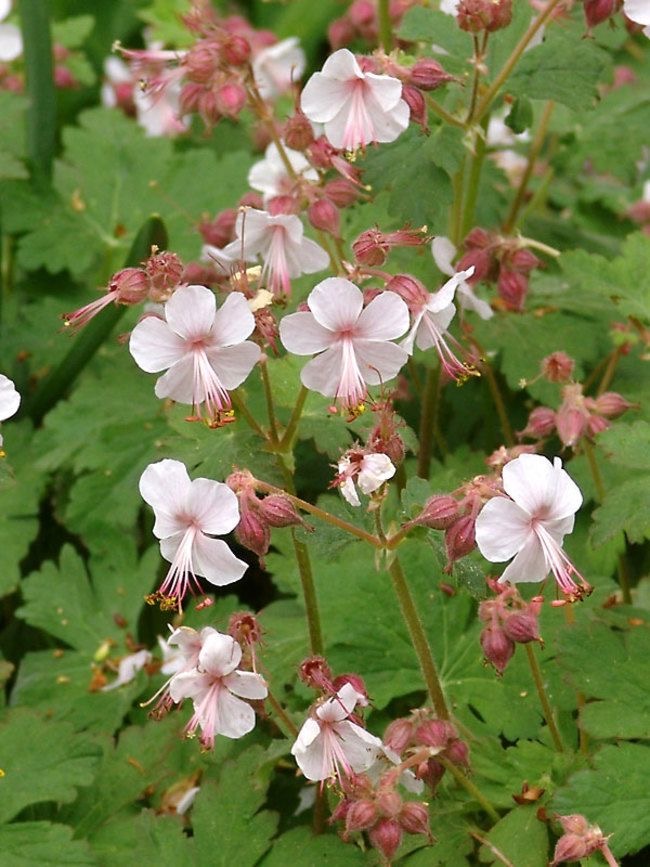
They will flower for a good two months (some like the famous G. Rozanne for much longer) and when they start to falter in midsummer, shear the tired leaves back to the ground, water the crown well and you will be rewarded with fresh new leaves and hopefully more flowers in a month’s time. Want more? Just divide them in autumn or spring.
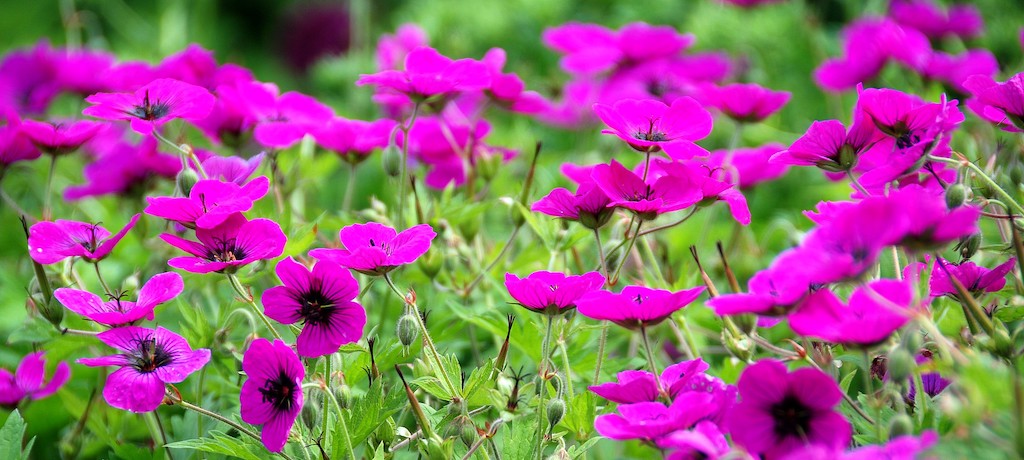
We are very pleased to be hosting a feature in early April about this fabulous genus written by the owner of The Hardy Geranium Nursery (there’s a link at the bottom to their site), so watch out for that.
Cosmos. Okay, being tender annuals, these need a scintilla more work than the cranesbills, but once they’re going, they are a long-lasting delight from mid-summer onwards!
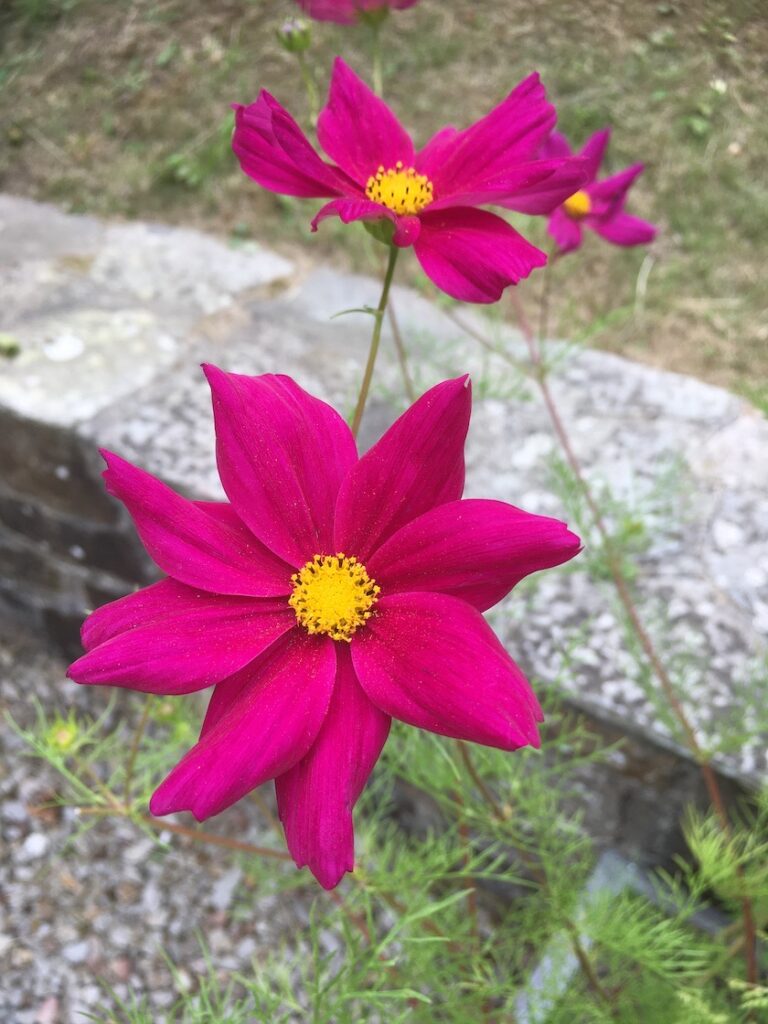
Sow seeds in the spring – truly, truly, getting them to sprout is a piece of cake (Laura shows you how in our latest YouTube video -link at the end) – or buy seedlings in a garden centre to grow on inside. Pinch out the top of the stem when they are about 10 cm tall to make them bush out, and plant them outside when the danger of frost in your area is over. Keep them watered and dead-headed and they will dance for you the whole summer long..
Hydrangeas. This is another extremely diverse genus, and many are perfect for taking the garden from high summer into autumn. I am crazy about the tall H. paniculata sorts with their gently changing flower-hues, and the lacecap varieties have a daintiness and near-irridescence when they are in bloom. My 5-year old sparkles-obsessed grand-daughter would THOROUGHLY approve!
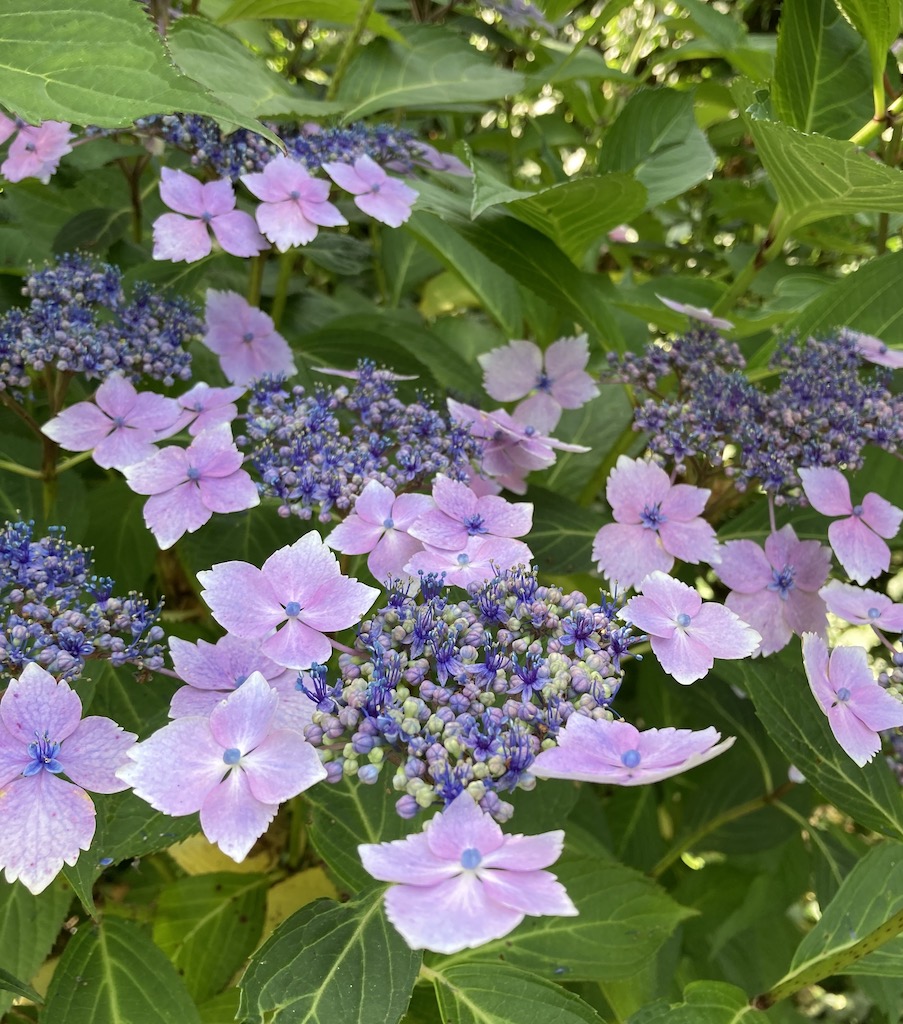
It’s a good idea to leave the papery flower-heads on till early spring to protect the shoots and stems below from bitter winter weather.
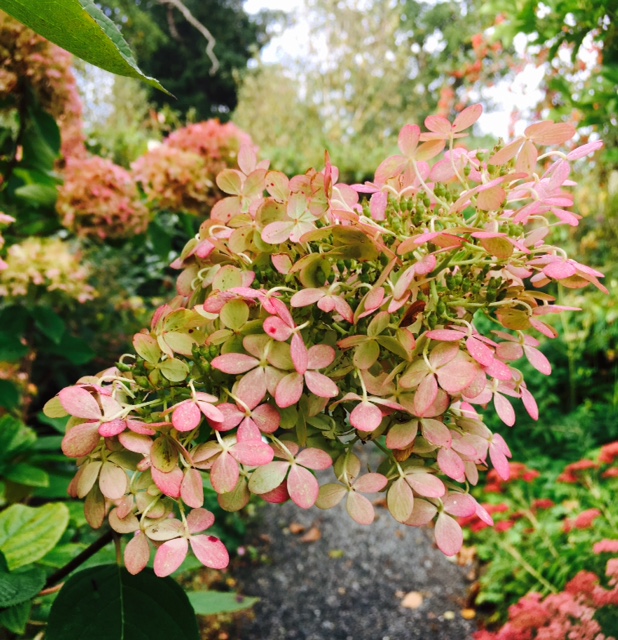

Euphorbias. Hmmm, Elaine purports to want variety but her garden seems to be awash all summer long only with various shades of pastel don’t you think?
I like my garden to burst into action with the shots of lime green that only euphorbias can bring to the party (and yes green does count as a colour Elaine). They come in all shapes and sizes and I don’t think there’s a bad one amongst them.
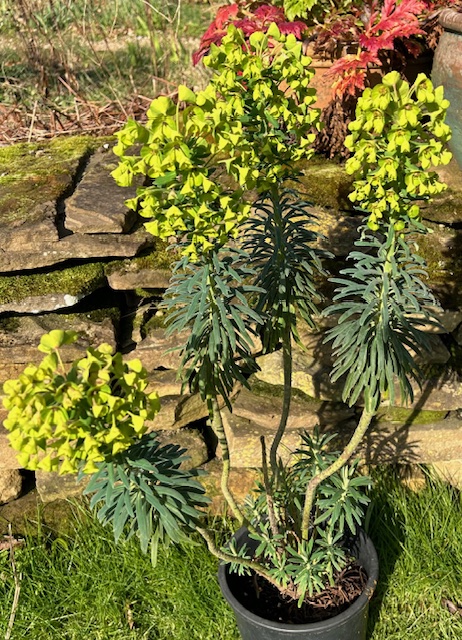
Perennial foxgloves. Taking over from the euphorbias I’m now growing more and more perennial foxgloves – I love their height and their intriguing mottled patterns and the fact that you can watch the little bees working at eye level instead of having to crouch down and squint. I’m ignoring the fact that Christopher Lloyd refused to include a chapter on foxgloves in one of his books as he considered them drab and that Elaine may again query whether brown constitutes ‘colour’.
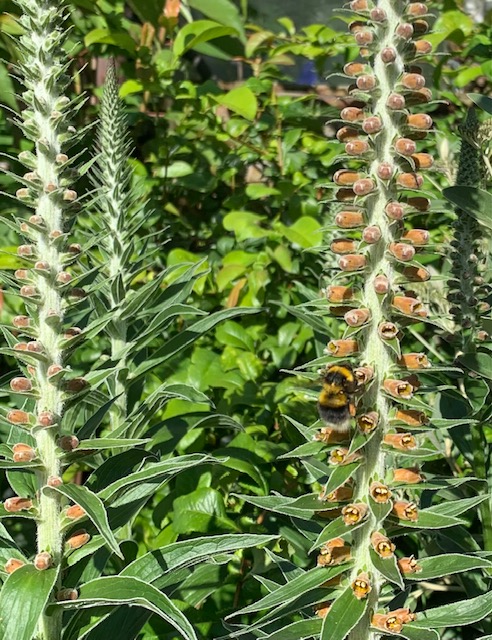
And I’m leaving out the new hybrids between our native foxglove and the Canaries species, both of which are prettier before being unnaturally combined to produce something that reminds me of a reality TV celebrity whose had too much plastic surgery. Their length of flowering is down to them being rendered sterile by the hybridising process which I find equally disturbing.
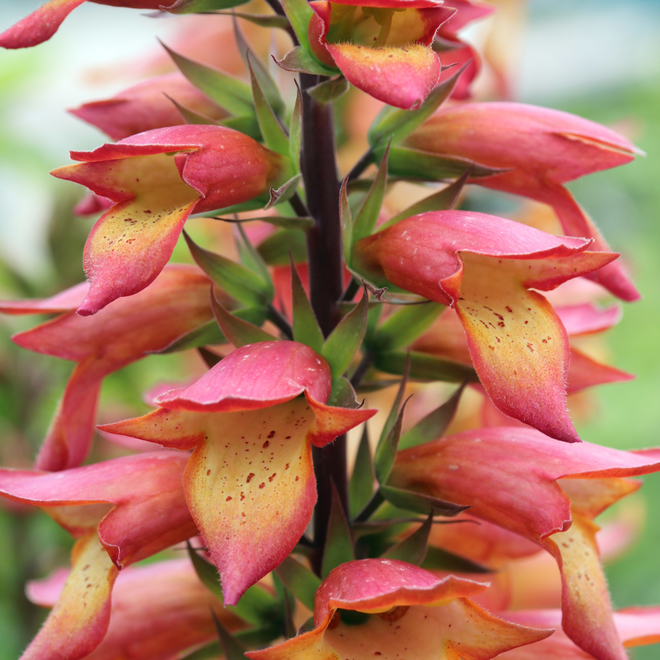
Veronicastrums. Spoilt for choice in late summer when all the prairie plants hit their stride I think I would pick veronicastrums as the main summer stalwarts that keep the interest going into autumn.
Again their height adds structure as well as colour, although V. ‘Fascination’ can take this to extreme and may need propping, there are some fabulous mid height cultivars and the best of these I think is V. ‘Alba’.
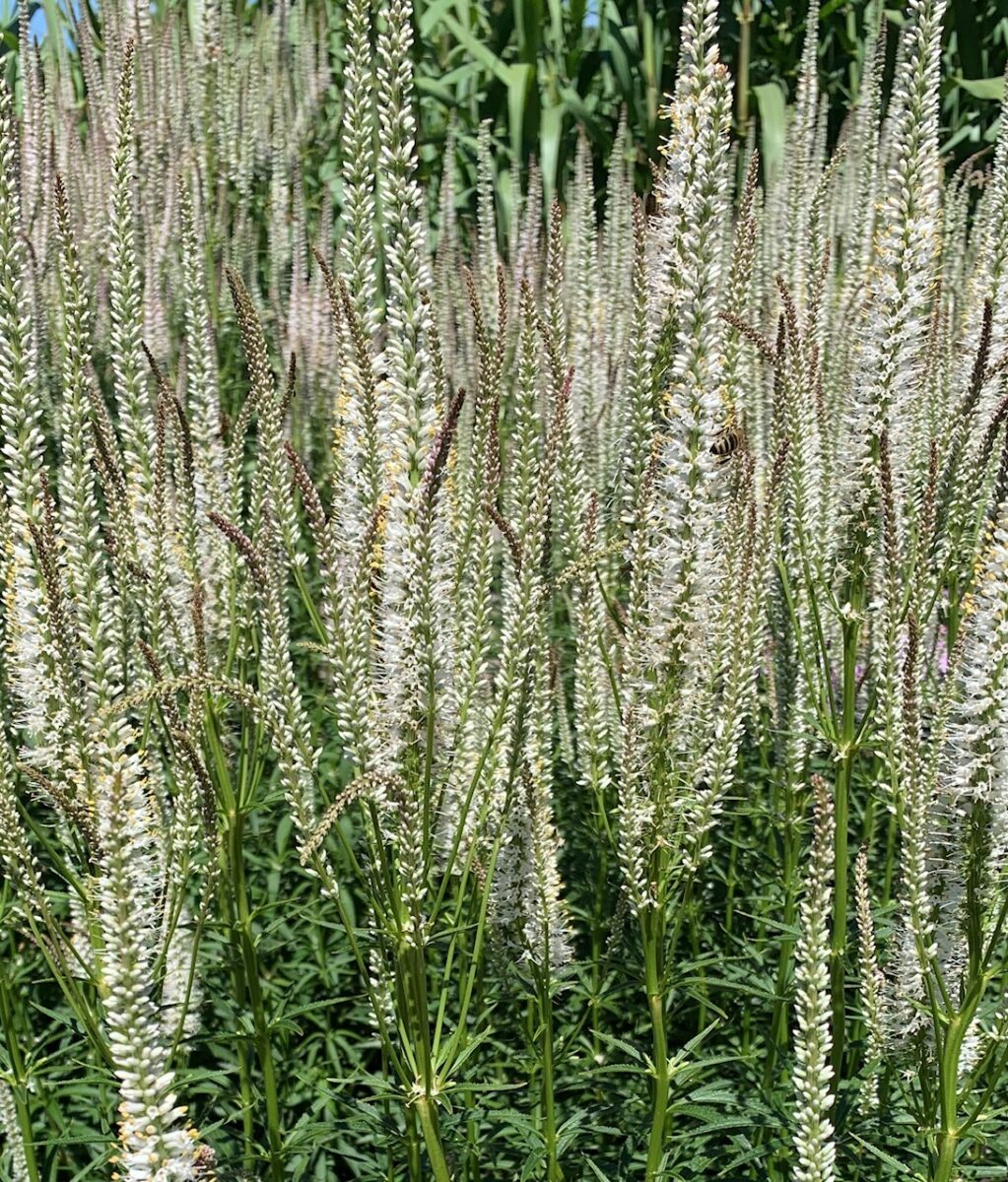

It’s slightly different here in the Scottish Highlands. With a certain savoir faire, our spring is still on the chaise longue in its smoking jacket waiting for winter to throw in the towel.
Eventually, about late March, POW! it’s off the couch and down to business. Chaos ensues as crocuses, daffodils and primroses crash into one another in glorious profusion. But they’re all a bit ‘wee’ and our geraniums and euphorbias are still very much waiting in the lobby.
Enter … rhododendrons and azaleas. Laura disapproves of these in the same way we dislike people who don’t like us. You see she tried to grow rhododendrons in her dry, hot Sussex soil and failed. What they favour is an acid soil, what’s called a ‘humid’ climate (🌧️) and a bit of overhead gloom. They love it here.
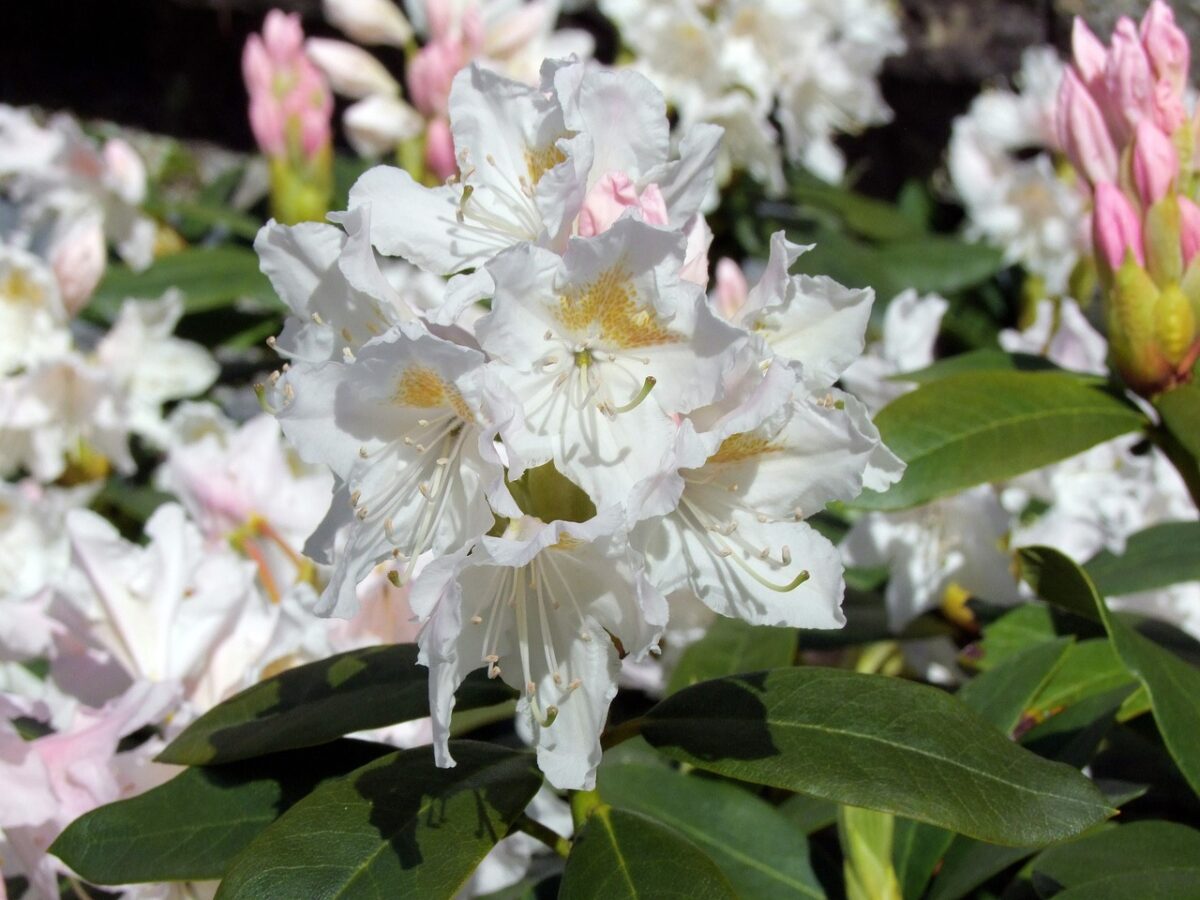
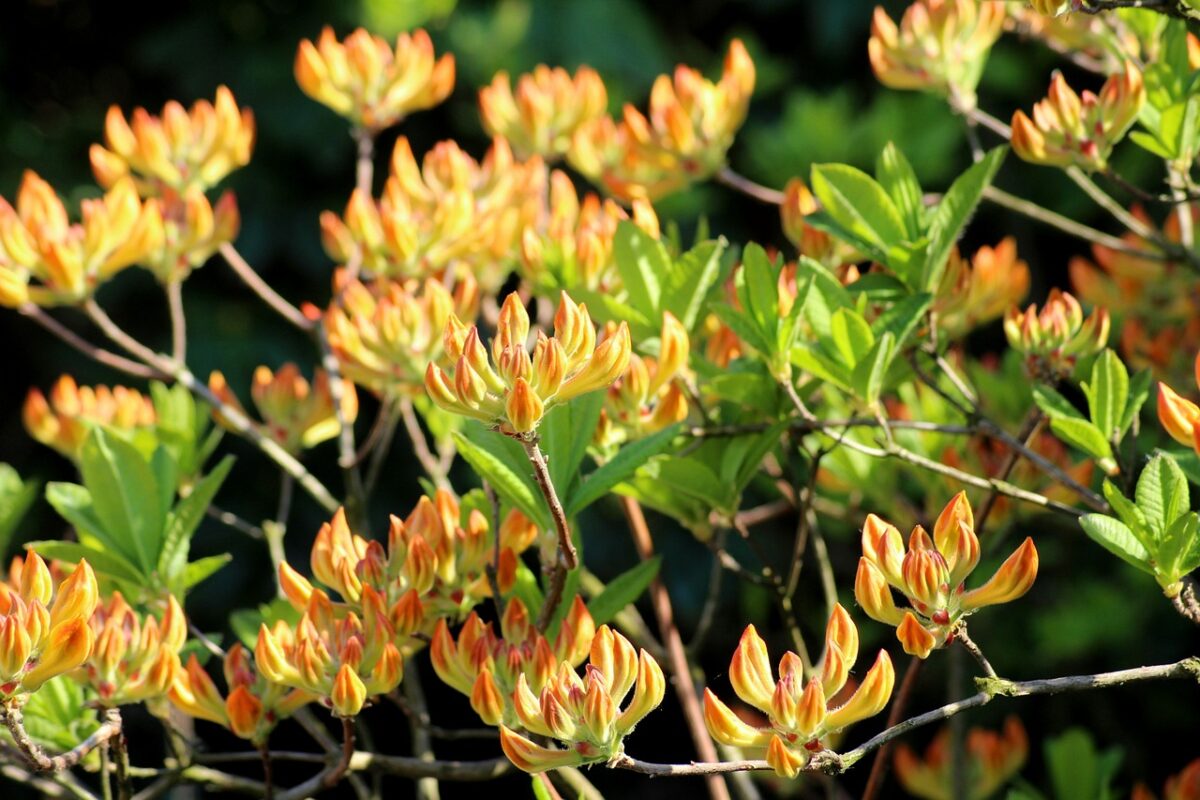
Please don’t just think of the invasive R. ponticum. There are gorgeous tree rhododendrons (arboreum), some with that wonderful ‘teddy bear’ rusty underside to their leaves, while the colour and scent of many deciduous azaleas is positively intoxicating, and those tiny evergreen Azalea japonicas wouldn’t look out of place in a WAG’s handbag – bling-tastic!
Alliums. Moving on to early summer, here’s one for everyone. What a smashing genus of bulbs this is. Utterly dependable, its foliage takes up next-to-no room, it flowers for eons and then you have that fantastic seed head which is just as gorgeous. Mainly in purple hues, these are at their best at the same time as Mec0nopsis – the startlingly blue Himalayan poppies – another stunner that my southern sisters aren’t able to grow (sad face 🤣) – and what a combination these two make!
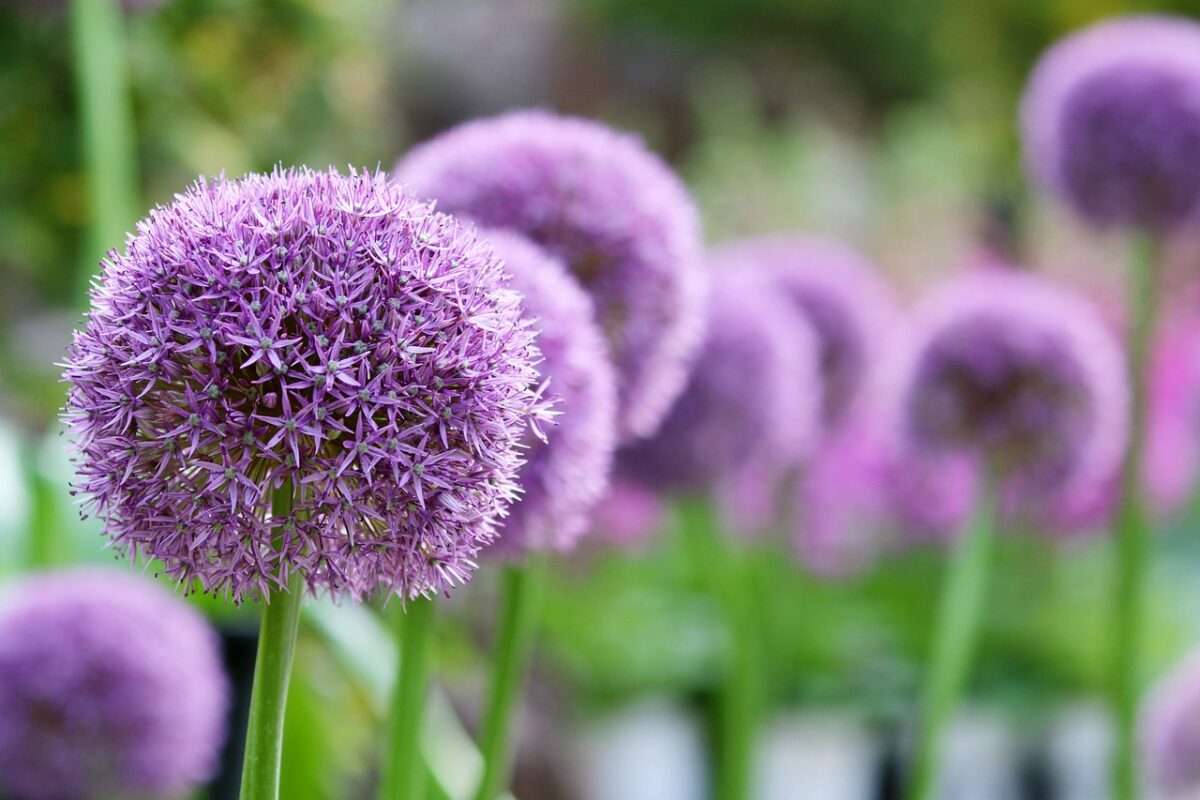
Sweet peas. Finally I can’t believe neither of my sisters suggested sweet peas. A £2 packet of seeds will give you scent and colour from high summer for month after month – and in our ‘humid’ climate 🌧️😉 – several months after that. To be fair, Laura’s video on how to grow sweet peas has had 19,000 views so far. I wish she’d do ‘Rhododendrons – the Sequel’ but I think they’ve got some work to do before they’ll be allowed on her casting couch!
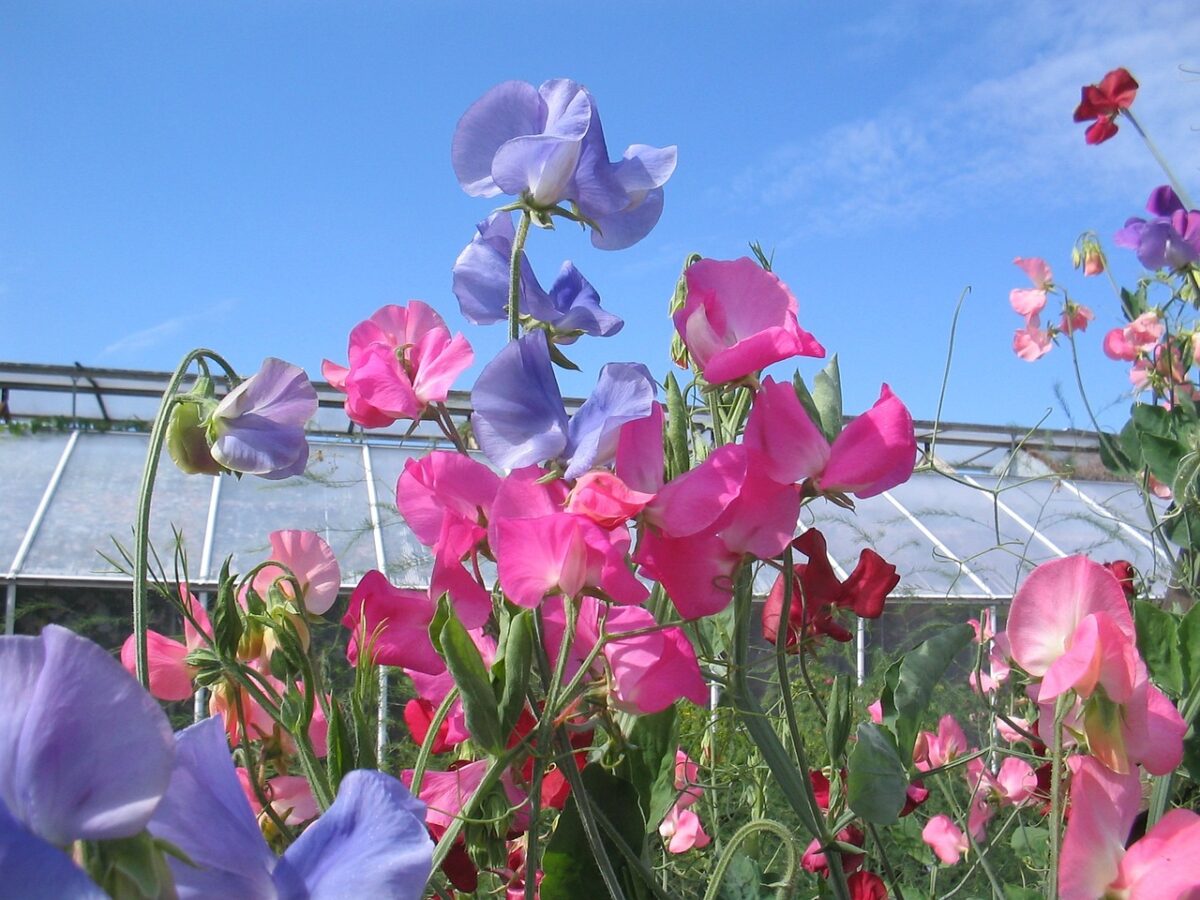
Winter is losing its grip but Louise’s Great Plant of the Month has never looked better – check out this wonderful acer, which owns an Award of Garden Merit from the RHS.
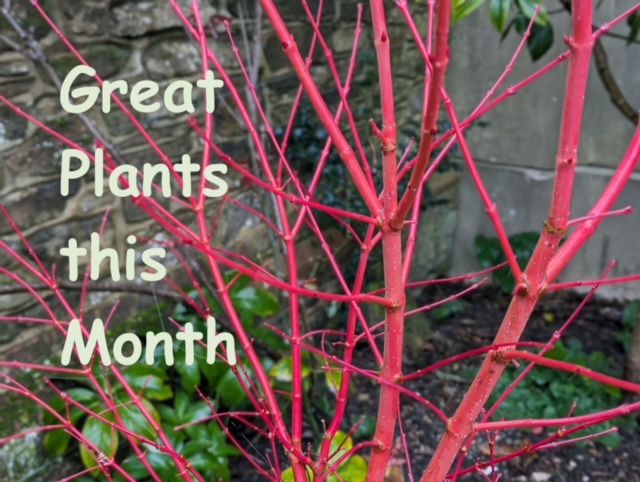
Free draw!
We’re giving away two sets of these fabulous RHS-endorsed garden snips in a holster. We’ll pick the winners at random from all our lovely email subscribers.
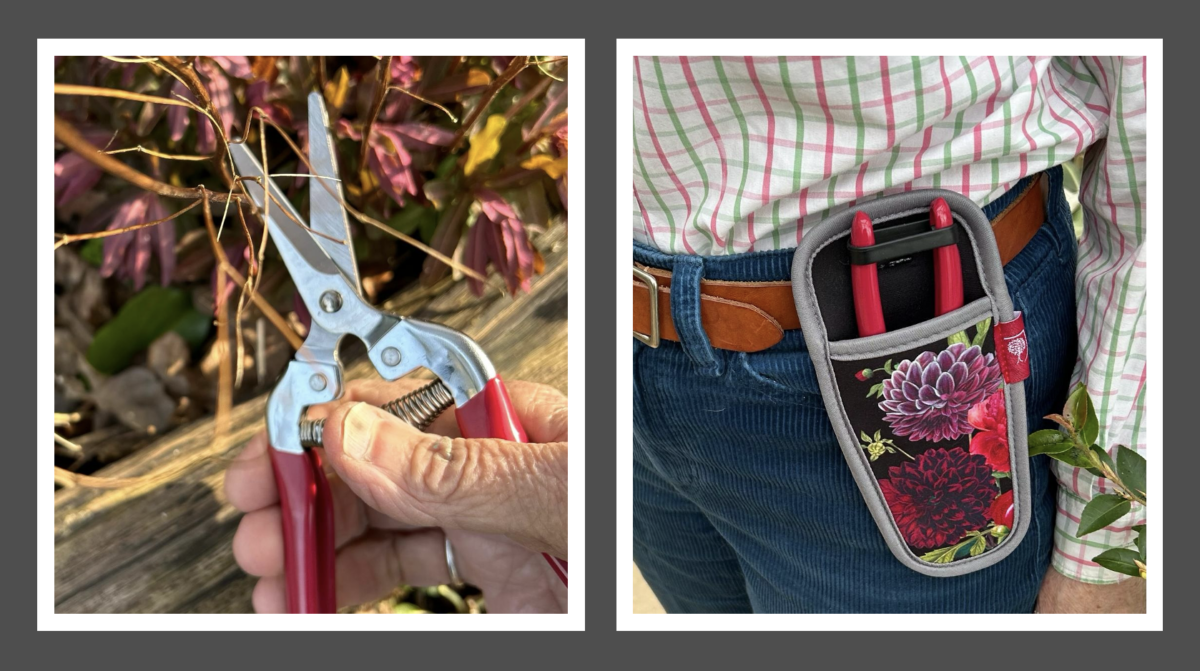
No need to do anything if you’re already getting our regular emails – you’ll go into the draw automatically, but do share this link to our draw with all your friends!
NB This is the link to the lovely Hardy Geranium Nursery we’ll be featuring shortly
More NB Have you discovered our YouTube channel yet? You’ll find us talking, with a varying degree of technological success, about gardening. Laura’s latest tutorial on sowing general flower seeds should be top of the list, and then scroll down for the sweet pea video that’s gone viral! Just subscribe for free if you find it’s fun or helpful to you.
Even more NB If you’re not already a subscriber and you’d like a bit more gardening chitchat from the3growbags, please type your email address here and we’ll send you a new post every Saturday morning.
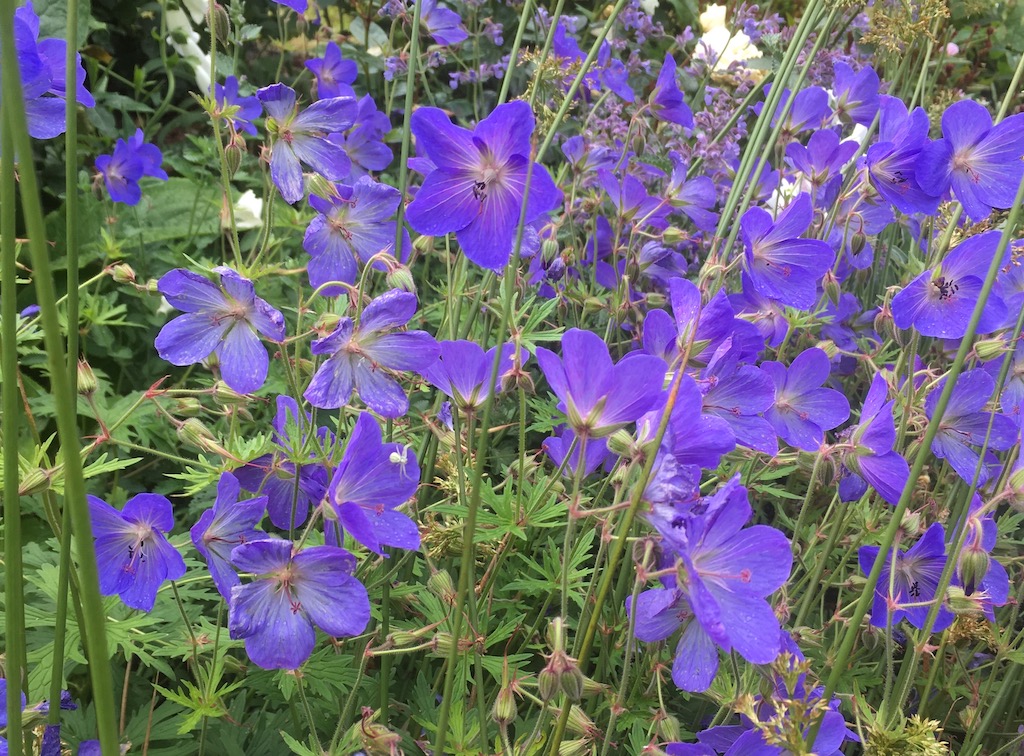
10 replies on “Our ‘go-to’ plants to keep the colour coming”
I live in SE England. I’m passionate about gardening and mad about plants. Signed up for your newsletters and love it thoroughly. Thanq ladies 🤗 💙 💜
What a nice comment to wake up to this morning! Glad you’re enjoying our blog, we love writing it. Best wishes Laura
Ha ha, I see what you mean about digitalis Firebird looking like it’s had work done! I have tried it here in Edinburgh, but has not lasted the winter, no doubt due to its Canary Island parent.
Hello Barbara, yes that’s my other beef about the so-called Illumination series of foxgloves – they don’t overwinter well even down here in the south and Caroline reports that her Firebird turned its toes up almost immediately in the highlands! I grow one of the parent species Digitalis canariensis which is properly tender and lives in a pot, but which can be hard pruned and tucked somewhere frost free each winter but bursts back into life with lovely rusty orange flower spikes all summer long (with much more integrity than its botoxed offspring) Best wishes Laura
I am happy to say I love some of each of your choices
Elaine – Cranesbill and Cosmos
Laura – Veronicastrum
Caroline – Allium, Azalea and Sweet Peas
Hello Sharon, glad we’ve ticked a few boxes for you and I notice that you have very diplomatically picked examples from each of our lists so that you don’t show any favouritism 🤣 best wishes Laura
Acid soil, humid climate and overhead gloom describes Crowborough perfectly, and it’s in Sussex! Plenty of gorgeous azaleas here!
Hello Maggie, yes Caroline was being unnaturally kind to me when she blamed the climate in the south-east for my ineptitude with rhododendrons and azaleas – you only have to look at wonderful gardens like Leonardslee and High Beeches, both only about 10 miles away to see that it is possible for them to flourish in the South East. I think it’s more to do with my soil not being quite acid enough and my garden being prone to summer drought, but I’m trying to tame a damper area of the garden this year and might have more luck there – as you say there are plenty of examples of success to spur me on. Thanks for writing in and bolstering my resolve to give them another go ! Best wishes Laura
Oh, Laura, Euphorbia cyparissias is an absolute thug! I agree that euphorbias are generally really garden-worthy but that sap is so lethal!
Hello Sue – I know what you about this little rascal, but I do still let it wander around a bit of wasteland under our diesel tank, safely away from any beds or borders, and it’s spring shoots give a vibrant shot of vivid lime green and purple just when you need it. Definitely one that comes with a health warning though so thanks for pointing this out! And yes best to always wear gloves when you need to prune them back – best wishes Laura